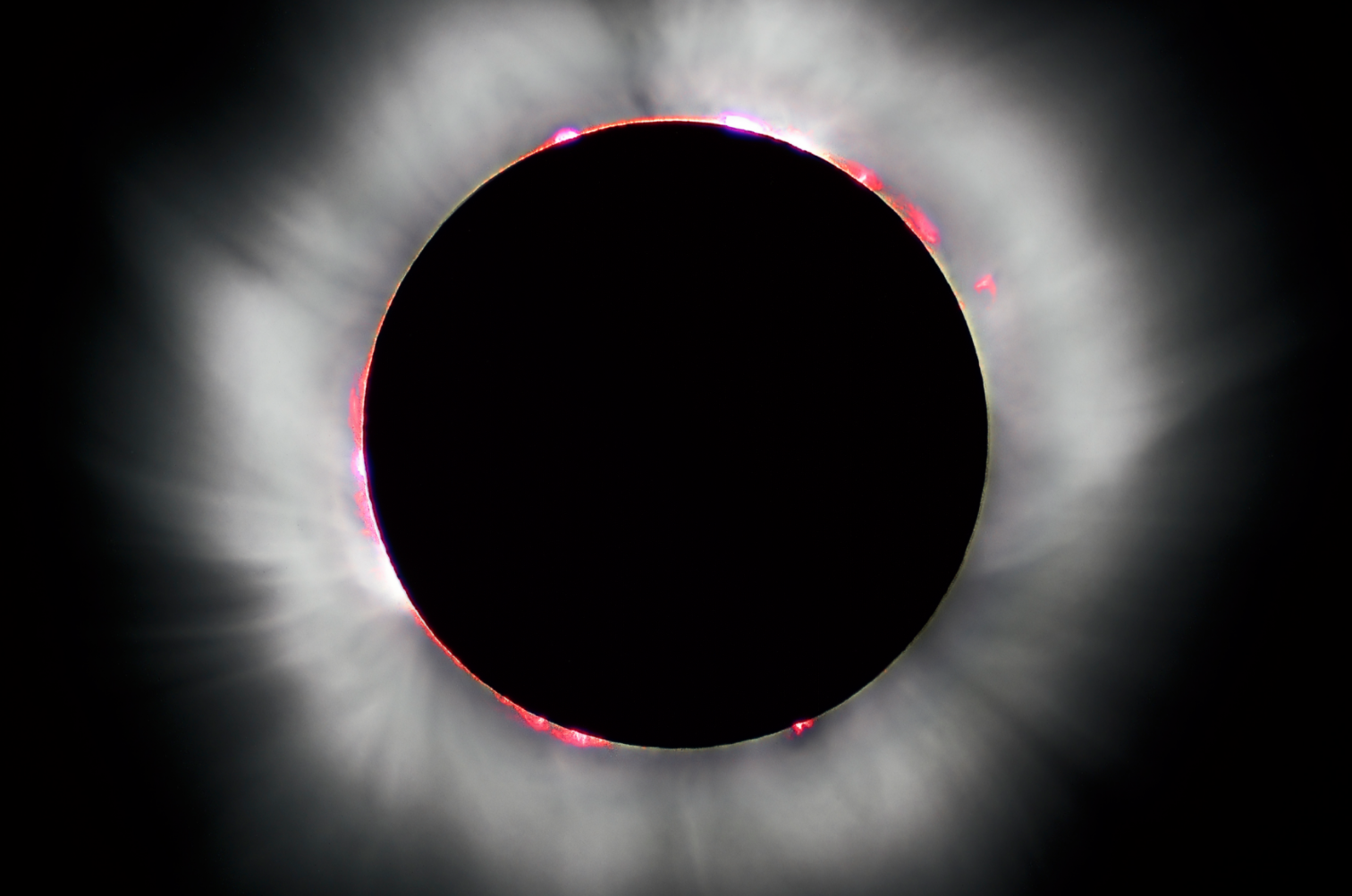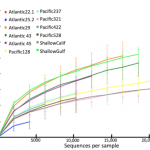
On July 20th, 1963, three scientists sat on a research ship 200 miles south of Woods Hole, MA, waiting for something remarkable. They were nearly 4000m above the seafloor, and using a sounder (similar to sonar), they could ‘see’ a line of creatures resting in the deep. By this time, biologists were beginning to unravel the mystery of this ‘false bottom’–a layer in the ocean that looks the the sea floor on the sounder but isn’t–which covered much of the ocean. This false bottom rises in up at night and sinks down during the day. This rising and falling is in fact caused by the largest migration of animal on Earth–everything from fish, shrimp and jellyfish, moving hundreds of meters in unison up and down each day. But how and why these animals rose in fell in the ocean wasn’t clear. As the scientists watched their instruments, the light began to fade. Not from the setting sun, but from something else.
The scientists were trying to answer a question that could be answered literally no other way. Some experts suggested that this massive migration was due to each animal’s own biological rhythm; the same rhythm that causes you to feel jet lag after a long trip. But others thought that the sun itself was driving this massive shift from shallow to deep and back again: as the sun set, animals saw the dimming light and rose to the surface. As the sun rose, they sank again into the deep. How could the scientists test between these two different hypotheses? They can’t exactly alter the sunrise…
Luckily, Earth’s view of the sun is altered once a year thanks to a cosmic twist–when the moon blocks it from view. A solar eclipse on land can be an eerie phenomenon. Nighttime crickets and frogs begin to sing, birds fall silent, even bees return to their hives. But until recently, what happened in the ocean depths was a mystery.
Back on the research ship in 1963, the moon moved into its place in front of the sun, daylight rapidly faded, and the scientists solved the migration mystery: the deep layer of animals began to rise. Bioluminescent creatures started to shine, and nocturnal creatures started a frantic upward thrust. As the world grew darker, they swam upward nearly 80 meters. But this frantic migration didn’t last long. As the moon receded and the sun revealed itself, the massive animal layer did an about-face, scrambling back into the safety of the darkness. One can only imagine the frenzy as millions upon millions of creatures clambered towards the surface and then, just as quickly, rushed back to the deep.
On the boat the scientists could only observe this massive movement with sounder. But it was enough to answer their question. Thanks to the solar eclipse, we now know that animals hiding in the deep are governed in part by the external ebb and flow of light from the sun.
Ancient humans considered eclipses ominous signs. Now, modern humans adopt a more spectator role in this celestial occurrence. There’s even a citizen scientist initiative to understand how creatures on land responds during the upcoming eclipse. But for millions of creatures living in the open ocean, a solar eclipse, at least for a short time, may really spell calamity.
Work cited
RH Backus, RC Clark, AS Wing. (1965) Behaviour of certain marine organisms during the solar eclipse of July 20, 1963. Nature. 4975. pp 989-991







Interesting, thank you
Really interesting.
But why calamity unless there are humans waiting there to kill them (which is sadly is an all too real possibility)? Or do they get the bends? What?
Please explain.
Could the oceans get more overfishef because of eclipse?
Ah yes–in that sunrise and sunset tend to be more gradual. For prey animals, moving into dark the surface waters only for the sun to quickly return could put them in serious risk! This is somewhat speculative–I don’t know of any studies that have looked. But it’s certainly the first things that came to my mind when I heard this study.
Given the duration of eclipses, the fact that not all points throughout the planet are exposed to it in the same amount or length, that’s highly unlikely.
There are other predators in the sea besides humans. Indeed, most of these species fear other aquatic animals, not man.
I did not know that the sunlight was detectable at 4000m; The midnight zone at 1000m is the deepest part of sunlight penetration and most light penetration does not exceed 200m from what I have read.
Thank you for wonderful insight on sea creatures affected by eclipse.
We just finished out eclipse in the northwest. Nothing happened in the briny that I could see. Everything is back to normal. Gulls doing what they do. A family of Pelicans perched on on a dock. I saw an Osprey fly by with a fish followed by a bunch of crows hoping he’d drop it.
Exactly right! Most “false bottom” biomass is right at that depth edge between sun and darkness!
Really nice summary! Just FYI, I’ve seen this piece posted word-for-word elsewhere without proper credit. Here’s one:
Man, I’ve seen this posted word for word in a number of places without proper credit. Here’s one:
http://earthfirstjournal.org/newswire/2017/08/21/a-solar-eclipses-effect-on-deep-sea-life/
Ah, the internet…thanks for letting me know, and for coming to the original!
I was thinking of that as well… What part of the spectrum would penetrate that deep?
Misuse of term ‘sonar’ which uses sound to detect azimuth and range to targets: instead of ‘sounder’ which uses sound to detect depth to targets usually enhanced layers at various frequencies.
Otherwise an interesting and timely comment on still exciting pursuits in acoustic oceanography
Thank you for this most valuable information. It is fabulous people like you that help curious lovers like me to expand the love of this earth and universe that surrounds it. The circle of life keeps flowing.
Nowhere in the article they say the light gets this deep – it’s just stated that the real bottom is at this depth, as oposed to the “fake bottom” of unspecified depth.
wasting their energy?
Wonderful stuff. The infinite majesty of Creation.
You’re most welcome, and thank you for stopping by!
Thank you for catching that. I’ve corrected the article!
Any insight why this migration takes place? Access to new food supply nearer the surface? Increased oxygenation in water nearer surface? Romantic moonlight assists in procreation?
All of the above plus I’m sure many more! The surface waters are more productive in terms of algae growth, but also more dangerous in the daylight with nowhere to hide.
Very good illustration of how science works.
Thanks!
Great post! Have nice day ! :) zvhil